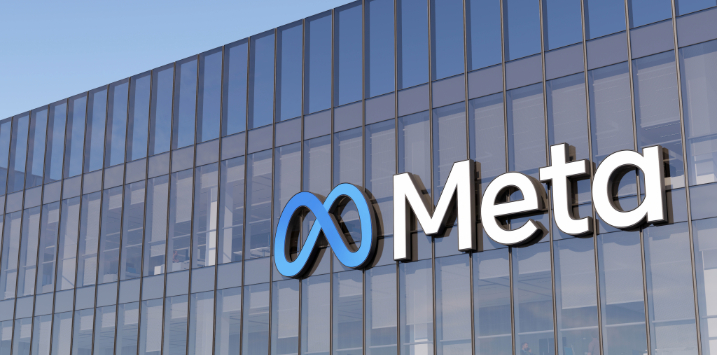
Did the artificial intelligence bubble just pop?
In U.S. trading overnight, Nvidia achieved a market capitalisation of US$5 trillion, after which Microsoft, Meta Platforms and Google’s parent company Alphabet delivered their September quarter earnings.
The results were impressive, as expected. Microsoft reported Q1 revenue of US$77.67 billion, beating estimates of US$75.33 billion, with earnings per share (EPS) of US$4.13, surpassing the US$3.67 forecast.
Alphabet delivered Q3 revenue of US$102.35 billion, topping the US$99.89 billion estimate, with EPS of US$3.10 beating the US$2.33 forecast. Cloud revenue grew 34 per cent.
Meta Platforms posted Q3 revenue of US$51.24 billion, exceeding estimates of US$49.4 billion, but EPS of US$1.05 missed the US$6.66 forecast due to a tax charge.
But while Alphabet’s stock surged 7.5 per cent after hours. Microsoft’s shares fell 3 per cent due to underwhelming Azure cloud growth.
More significantly, perhaps, Meta’s shares have fallen by eight per cent after hours – at one point they were down more than 9.1 per cent – reflecting concerns over heavy artificial intelligence (AI) spending.
Figure 1. Meta shares fall 9.14 per cent after hours.
Meta Platforms announced a significant ramp-up in its capital expenditure, projecting US$70–72 billion for 2025, with plans for an even steeper increase in 2026 to secure the computational fire-power needed to weave AI deeply into its ecosystem.
Meta’s CEO, Mark Zuckerberg, is reported to have struck a defiant tone, emphasising the transformative potential of AI and the urgency to lead the spending race. “We’re seizing this moment to accelerate,” he told investors. “Mastering these technologies will unlock extraordinary value. The company that excels in each facet of AI will capture the lion’s share of its potential.”
Zuckerberg’s vision is clear: Meta aims to pioneer groundbreaking AI-driven features, integrate them across its platforms, and scale them to billions of users. This, he argued, will not only birth new products and revenue streams but also turbocharge existing operations.
Here’s the problem. The market might be catching up with our thesis that there might not be enough customers, spending enough money, for the AI -mega-investment to generate a decent return.
Earlier today, in my article ‘What does the artificial intelligence boom have to do with iron ore?’ I wrote here,
“Massive sums are being funnelled into data centres to power artificial intelligence. Analysts at Morgan Stanley predict that total spending on these facilities could reach a staggering US$3 trillion by 2028 – not even accounting for skyrocketing energy costs. McKinsey takes it further, projecting US$5.2 trillion by 2030.
“According to McKinsey, again, about 60 per cent of this AI-related data centre spending will go toward semiconductor chips and other hardware. These assets typically wear out and are depreciated over roughly 5.5 years. If we assume they don’t produce any real economic value after that – and factoring in that much of Morgan Stanley’s US$3 trillion estimate is back-loaded toward the later years – the hardware and semiconductor investments alone would require generating more than US$500 billion in net cash flow just in 2028 to cover the basic cost of capital on the equipment investment.
“To make the math work for data centre operators aiming for a healthy 20 per cent free cash flow margin (which would validate their lofty stock prices), they’d need to pull in around US$2.5 trillion in revenue annually.
“OK, now assume the data centres’ customers – the businesses and consumers buying these AI services – also want to generate a 20 per cent margin. They would need to spend about US$3.1 trillion on AI services like agents and Large Language Models (LLMs).
“And here’s the problem; St James notes that US$3.1 trillion is equivalent to roughly 10 per cent of the entire U.S. gross domestic product (GDP) right now. To put that figure in context, total U.S. military spending is about 3.46 per cent of GDP. According to U.S. Treasury, total federal government spending in FY 2025 was US$7.3 trillion, which was 23 per cent of GDP.
“St James, provided some other comparisons to understand the optimistic expectations implied by the required aggregate estimates for AI spending and revenue generation. Netflix, with its army of about 300 million subscribers, is on track for around US$39 billion in revenue this year. Microsoft’s Office 365 suite, a staple for businesses worldwide, brings in about US$95 billion. Even OpenAI, boasting the biggest AI chatbot user base, is generating roughly US$13 billion annually. AI’s transformative potential is undeniable, and its growth story is just getting started. Yet, the sheer scale of revenue and spending on AI tools – US$3.1 trillion – needed to recoup today’s capital outlays highlights AI’s requirement to monetise fast to justify the hype.”
Mark Zuckerberg’s overnight comments aren’t the first time he’s echoed the grow-at-all-cost ambition, but the aftermarket reaction – stock down 9 per cent – might signal, investors are getting nervous and might be reaching the conclusion we have – that there’s a risk of spending too much on AI.
Zuck’s bold AI spending forecast has sparked a sharp sell-off, with shares tumbling after hours. Could the market be tiring of the build-now-profit-later gamble? Time, of course, will tell.
Disclaimer:
The Polen Capital Global Growth Fund own shares in Nvidia, Alphabet, and Microsoft. This article was prepared 30 October with the information we have today, and our view may change. It does not constitute formal advice or professional investment advice. If you wish to trade these companies you should seek financial advice.